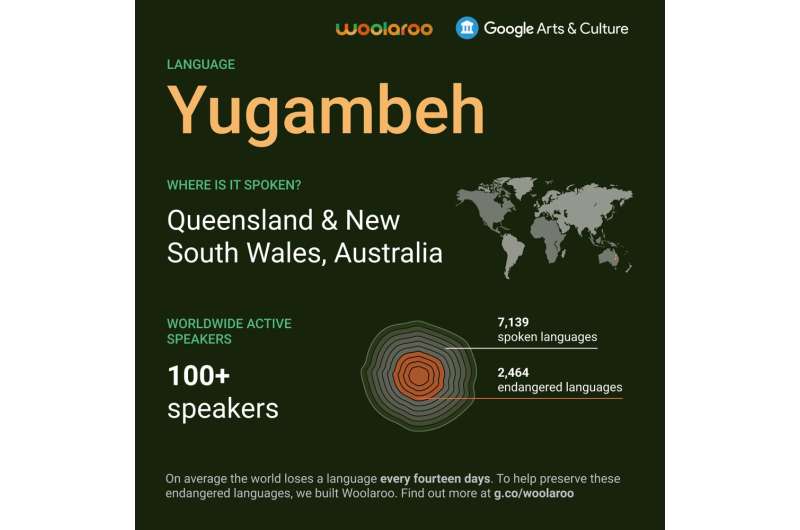May 6, 2021 report
Google introduces Woolaroo, a tool for learning indigenous languages

With many indigenous languages worldwide becoming endangered due to a dwindling number of native speakers, Google has introduced the app Woolaroo which focuses on learning these languages. The idea for the app stemmed from the situation of Yugambeh, an Indigenous Australian language of southeast Queensland.
As with many other ancient and indigenous languages whose vocabularies have traditionally emphasized the outdoors but might lack terms for certain modern items and concepts, many children struggle to learn Yugambeh in such a contemporary world. For example, Yugambeh has no natural word for "refrigerator" or "telephone," meaning speakers of the language must substitute terms that describe those items, such as "cold place" and "voice thrower," respectively.
Now, Yugambeh will be the first indigenous language featured on the Google Arts & Culture experimental Woolaroo app, a trial using Google Cloud Vision API. With its starting point at the Yugambeh Museum, the app utilizes three decades of cultural and local language research to help preserve Aboriginal languages, as they adapt to an evolving Australia, including updates in technology.
Having observed local frontline worker Allan Lena, a native speaker of Yugambeh, the CEO of Yugambeh Museum Rory O'Connor has high hopes for how an app like Woolaroo can both help safeguard a small language such as Yugambeh as well as introduce more young people of many backgrounds to the culture and language. He says that given how few people still speak this language fluently, Woolaroo can share this crucial knowledge with the newer generation.
In order to allow community members to make their own changes and add their own vocabulary to the app, Woolaroo is open source, emphasizing word lists as well as audio recordings to assist with accurate pronunciation. Currently, the app supports 10 global languages including Calabrian Greek, Louisiana Creole, Māori, Nawat, Tamazight, Rapa Nui, Sicilian, Yang Zhuang, Yiddish and Yugambeh.
A main advantage of Woolaroo remains the ability of users to add and edit the app's content for the most up-to-date quality of material. That means that if a user or any family members speak even just a few words in any of these languages, they stand to make a significant contribution to Woolaroo.
An additional benefit of this application offers users who wish to learn an indigenous language the opportunity to dive right in. That way, people of many different backgrounds and living around the world can discover more about the minority and native communities in the region where they live.
More information: "Woolaroo: a New Tool for Exploring Indigenous Languages." blog.google/outreach-initiativ … ndigenous-languages/
© 2021 Science X Network



















